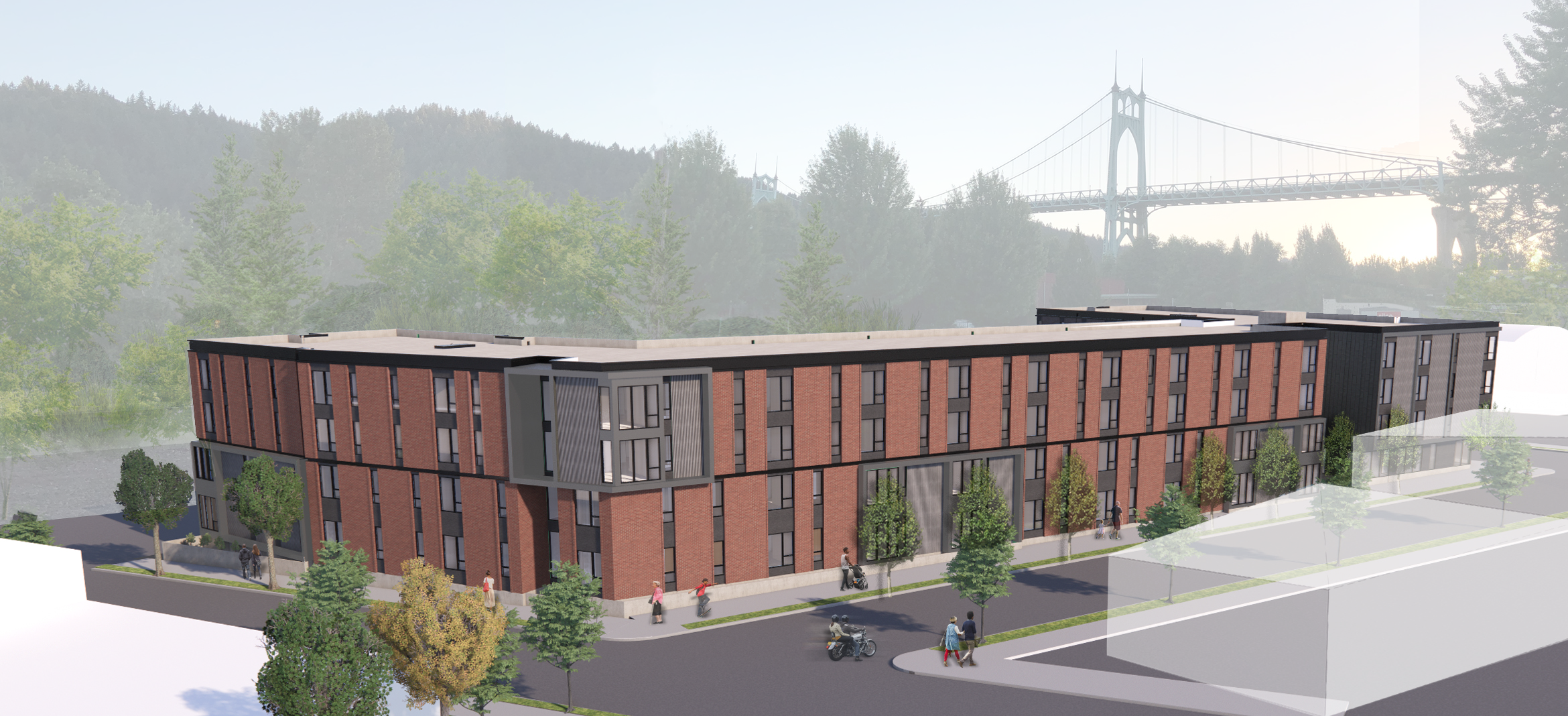In its year-end pandemic relief and funding package, Congress delivered a surprise gift for affordable housing: wonky but noteworthy improvements to one of the most common methods of paying for affordable housing, the Low Income Housing Tax Credit (LIHTC).
Although the federal package left a lot to be desired in terms of helping families today who are struggling to make ends meet, the LIHTC changes have had an immediate impact on housing developments in the works, including those envisioned for the Healthy Housing Initiative.
In fact, for the Cathedral Village Apartments (pictured), a partnership between Catholic Charities of Oregon and Related Northwest, the changes resulted in an additional $2.5 million investment for the $38 million development.
If your eyes glaze over regarding the details of housing finance and federal tax policy, you’re not alone, but know this: the changes in the program mean more resources for affordable housing and more predictability for project financing. If you’re curious to learn more about the details, stay with me because this gets way down in the weeds…
In general, the LIHTC program works like this:
- For-profit companies get a reduction of their federal tax liability (spread over 10 years) in exchange for investing in the development of affordable rental housing.
- This investment helps pay for construction of housing for low-income households so that units can rent at below-market rates.
- The units are then regulated at these rates (which are adjusted annually by the U.S. Department of Housing and Urban Development) for a minimum of 30 years after project completion.
The LIHTC program has helped finance over 3 million affordable housing units (including the vast majority of Catholic Charities of Oregon’s housing portfolio) since it was created in 1986, but for most projects the value of the investor’s contribution has historically been tied to interest rates that are set by the U.S. Department of Treasury and are updated monthly. Because of this, when the federal government cuts interest rates, it also cuts the amount of investment in each affordable housing project. In addition, because the rates have historically changed from month to month, the value of the investment has been slightly unpredictable, which can create problems given the long timeline for affordable housing development. The updates passed by Congress make the LIHTC investment more valuable and more predictable for developers of affordable housing and have the potential for nearly 126,000 more affordable homes to be developed nationwide within a decade.
These updates will help Catholic Charities of Oregon realize the commitments of the Healthy Housing Initiative. To date, over 250 units of affordable rental housing identified as part of the Healthy Housing Initiative have received funding commitments and are under development, with additional projects advancing into development in the coming months.
